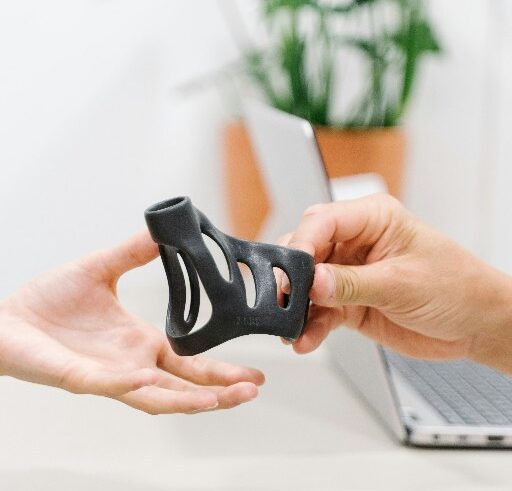3D Printing: An Introduction
Muhammad Yamin
Faculty of Agricultural Engineering & Technology, University of Agriculture, Faisalabad, Pakistan
In a world where imagination knows no bounds, 3D printing stands as a wizardry that turns digital dreams into tangible reality. This guide is your passport into the enchanting realm of additive manufacturing, demystifying the basics for those taking their first steps into this transformative technology.
Understanding Additive Manufacturing
At its core, 3D printing is a marvel of additive manufacturing. Unlike traditional subtractive methods that carve objects out of raw materials, additive manufacturing builds objects layer by layer. It’s akin to crafting a sculpture by adding one layer of clay at a time until the final masterpiece emerges.
The Birth of a 3D Print
The process begins with a digital design, often created using computer-aided design (CAD) software. This digital blueprint is sliced into thin layers, like a virtual loaf of bread, by slicing software. The 3D printer then interprets these slices and begins depositing material layer by layer to bring the design to life.
Materials
The magic happens with a variety of materials. Common filaments include PLA (Polylactic Acid), known for its eco-friendly nature, and ABS (Acrylonitrile Butadiene Styrene), famed for its durability. More advanced materials like nylon, PETG, and even metal filaments allow for a diverse range of applications, from crafting prototypes to producing functional parts.
Types of 3D Printing Technologies
The realm of 3D printing encompasses a diverse spectrum of technologies, each catering to specific needs and applications. Here, we explore some prominent methods:
Fused Deposition Modeling (FDM)
a) The Workhorse: Renowned for its affordability and user-friendliness, FDM is the most widely used technology. It operates by extruding a heated filament (plastic strand) through a nozzle, building the object layer by layer like constructing a miniature building with tiny bricks.
b) Material Versatility: FDM boasts a vast material selection, including PLA, ABS, nylon, and even metal filaments, catering to a range of applications from hobbyist projects to functional prototypes.
c) Limitations: While FDM excels in accessibility and affordability, it may not be ideal for creating highly intricate objects due to the inherent limitations of layer-based printing, potentially leaving visible layer lines on the finished product.
Stereolithography (SLA)
a) Precision Powerhouse: SLA shines in the realm of detail and accuracy. It utilizes a vat of liquid resin and a laser beam to selectively cure the resin layer by layer, solidifying the desired shapes with exceptional precision.
b) Smooth Finish: Unlike FDM, SLA produces exceptionally smooth surfaces, making it ideal for creating intricate models, jewelry, and other applications where fine details are paramount.
c) Considerations: SLA printers generally require more investment and expertise compared to FDM and may involve the use of potentially hazardous materials and solvents.
Selective Laser Sintering (SLS)
a) Material Maestro: SLS offers unparalleled versatility in material choices. It employs a high-powered laser to fuse powdered materials like nylon, metal, and even ceramics, layer by layer, into a solid object.
b) Functional Applications: SLS excels in creating functional prototypes and end-use parts due to its ability to handle robust materials and produce objects with high strength and durability.
c) Industrial Powerhouse: SLS printers are typically more expensive and complex than FDM and SLA, making them more suitable for industrial applications and professional settings.
These are just a few examples of the diverse 3D printing technologies available. There are even more specialized techniques like PolyJet, Multi Jet Fusion, and Digital Light Processing, each offering unique advantages and pushing the boundaries of what’s possible in the world of 3D creation.
Applications in the Real World
The versatility of 3D printing extends far beyond hobbyist projects. Industries embrace it for rapid prototyping, allowing designers to test ideas swiftly. Healthcare leverages 3D printing for creating customized implants, prosthetics, and even anatomical models for surgical planning. From fashion to aerospace, the applications are as diverse as the imagination allows.

The Accessibility Factor
What makes 3D printing even more enchanting is its growing accessibility. Entry-level 3D printers cater to enthusiasts and beginners, offering an affordable gateway into this mesmerizing world. Online platforms provide a treasure trove of ready-to-print designs, fostering a community where ideas are shared and creativity knows no borders.
The Future Landscape
As technology evolves, so does 3D printing. Continuous innovation brings forth new materials, faster printers, and enhanced capabilities. From construction projects printing entire houses to bio-printing in the medical field, the future promises even more awe-inspiring possibilities.
In conclusion, 3D printing is not merely a manufacturing technique; it’s a journey into boundless creativity. Whether you’re a hobbyist, a designer, or an industry professional, the world of additive manufacturing invites you to unleash your imagination and witness the magic of turning digital dreams into tangible wonders.






